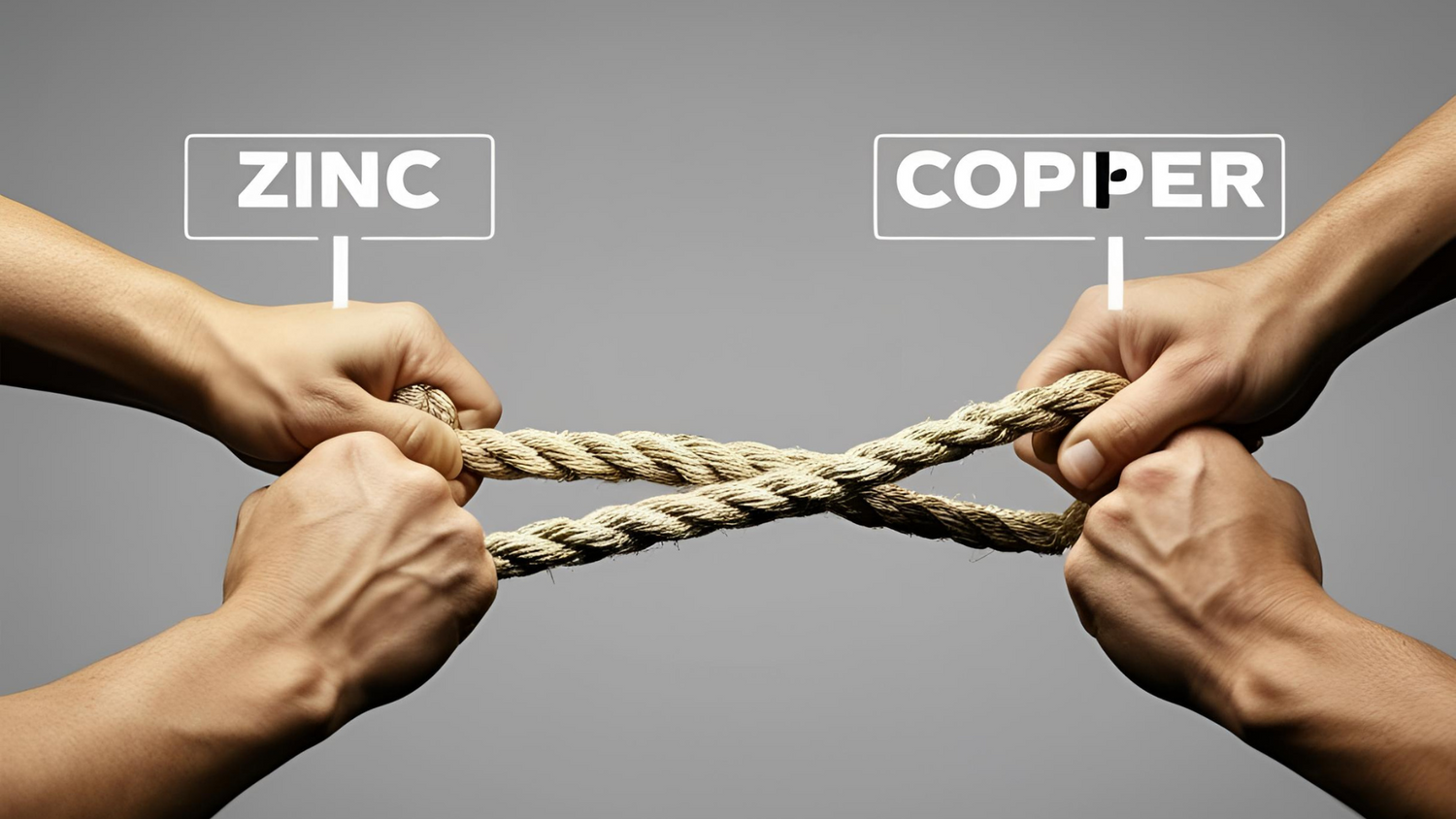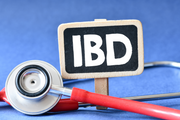The Mineral Tug-of-War Affecting Your Hormones

When it comes to your health, it's not just about how much of a nutrient you have — it’s how well it balances with others. But what happens when two essential minerals compete against each other for absorption and get thrown off balance?
Welcome to the delicate relationship between zinc and copper – a ratio that plays a major role in your mood, hormones, immune function, and overall health.
This blog post might be getting a bit more detailed than previous ones, but it is an important topic, that isn’t talked about enough.
Why Zinc and Copper Need Each Other — But Not Too Much
Zinc and copper are both vital for enzyme function, immune health, and cellular repair. But they work in opposition — if you have too much copper, your zinc absorption drops. If you supplement too heavily with zinc, you can suppress copper. That’s why it’s not just your individual levels that matter, but the ratio between the two. Ideally, your plasma zinc-to-copper ratio should hover around 1:1.
Unfortunately, modern life — especially for women — tends to push us into a high-copper, low-zinc pattern. And this imbalance can silently contribute to a wide range of frustrating symptoms.
So, what happens if it gets too much?
Too Much Copper, Not Enough Zinc: The Most Common Imbalance We See
Women are particularly vulnerable to this imbalance for several reasons. Hormonal birth control (like the Pill), pregnancy, and hormone replacement therapy (HRT) can all raise copper levels. Add in low dietary zinc from vegetarian or low-protein diets, plus everyday stress that further depletes zinc, and you’ve got a perfect storm.
Ever noticed a small white dot on your fingernails? That’s just one key indicator of low zinc.
Some other common symptoms of high copper and low zinc include:
- Emotional instability: anxiety, mood swings, irritability, or even depression
- Brain fog or poor concentration
- PMS and heavy periods, often due to estrogen dominance (copper tends to rise with estrogen)
- Skin issues like acne, eczema, or slow wound healing
- Histamine intolerance, which can look like allergies or rashes — copper slows the breakdown of histamine
- Frequent colds or sluggish immune response
- Chronic fatigue or signs of adrenal dysregulation
You may not realise the connection at first — after all, these symptoms are common, and many people are told they’re “just stress” or “normal for your age.” But the mineral imbalance behind them often goes undiagnosed.
What About Low Copper and High Zinc?
This is less common but can happen, especially in people taking high-dose zinc without guidance. It may also show up in those with specific absorption issues.
Signs of low copper include:
- Fatigue or unexplained weakness
- Anaemia that doesn’t respond to iron
- Low white blood cell counts (frequent illness)
- Neurological symptoms like numbness or tingling
- Poor connective tissue repair, since copper is needed for collagen and elastin
So how do you test for these imbalances?
If you're dealing with ongoing symptoms that don’t seem to respond to supplements or lifestyle changes, it may be worth testing your mineral levels. Here's how:
- Serum or plasma copper and zinc blood tests are the most common and accessible.
- Ceruloplasmin, a blood protein, gives you insight into how bioavailable your copper actually is (not just how much is floating in your blood).
- Calculating your zinc-to-copper ratio from your lab values can offer a more complete picture.
- For a long-term view, Hair Tissue Mineral Analysis (HTMA) can be helpful, though best used alongside blood work.
Natural Ways to Support a Healthy Balance
Balancing these minerals starts with the basics: food, lifestyle, and gentle support.
If you need more zinc:
- Load up on oysters, red meat, pumpkin seeds, and eggs — these are naturally high in zinc.
- If supplementing, make sure it’s part of a tailored plan, ideally under practitioner supervision.
To lower excess copper:
- Avoid unfiltered tap water (especially from copper pipes) and steer clear of copper cookware.
- Cut back on processed soy products, which can drive copper retention.
- Support your liver with foods rich in B vitamins, magnesium, taurine, and antioxidants like glutathione — these help detoxify excess copper gently.
Women, Hormones, and the Pill: What You Should Know
If you’re on hormonal birth control or have a history of heavy periods, it’s especially important to monitor your zinc and copper levels. The Pill has been shown to increase copper retention while depleting zinc — which can contribute to mood swings, fatigue, and worsened PMS over time. Addressing the mineral piece of the puzzle can make a huge difference in how you feel — and how your hormones behave.
If you're feeling "off" — mentally, emotionally, hormonally — and nothing seems to explain it, don’t overlook the power of minerals. A zinc–copper imbalance is easy to miss but just as easy to address with the right insight and support.
Please update the “Product” setting with the product you want to display.






